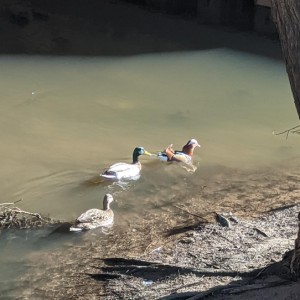Niwerc Castle
A glorious day to pop to Newark for our main weekly shop, I took the opportunity to walk to the nearby Newark Castle. I was also lucky enough to see a great crested grebe (I think), two Mallards and two Swans (main pic & extra).
Some familiar historical names and places are linked to the Castle, a few of which are mentioned below.
Newark Castle
Sited by the River Trent and founded in the mid12th century by Alexander, Bishop of Lincoln. Originally a timber castle, it was rebuilt in stone towards the end of that century. Dismantled in the 17th century after the English Civil War, it was then restored in the 19th century.
In a charter generally thought to date to 1135, King Henry I granted the Bishop of Lincoln permission to build a castle.
“Henry, King of England to all the Barons and to the Sheriffs and to his ministers and faithful men of Nottinghamshire, Greeting. Know ye, that I have granted to Alexander, Bishop of Lincoln, that he may make a ditch and rampart of his fishpond of Niwerc upon the Fosseway and he may divert the Fosseway through the same town as he shall wish.”
Alexander also established a mint at the castle. King John died after a feast at this castle on the night of 18 October 1216 from dysentry, according to tradition from eating a "surfeit of peaches".
English Civil War
Newark suffered three sieges during the English Civil War as two important roads ran through the town – the Great North Way (A1) and Fosse Way (A46) . It was a key location to hold as It connected the Royalists headquarters in Oxford to Royalist centres in the northeast.
Newark suffered it's civil war sieges between February 27th and 28th 1643, February 29th to March 21st 1644 and November 26th 1645 to May 8th 1646.


Comments New comments are not currently accepted on this journal.